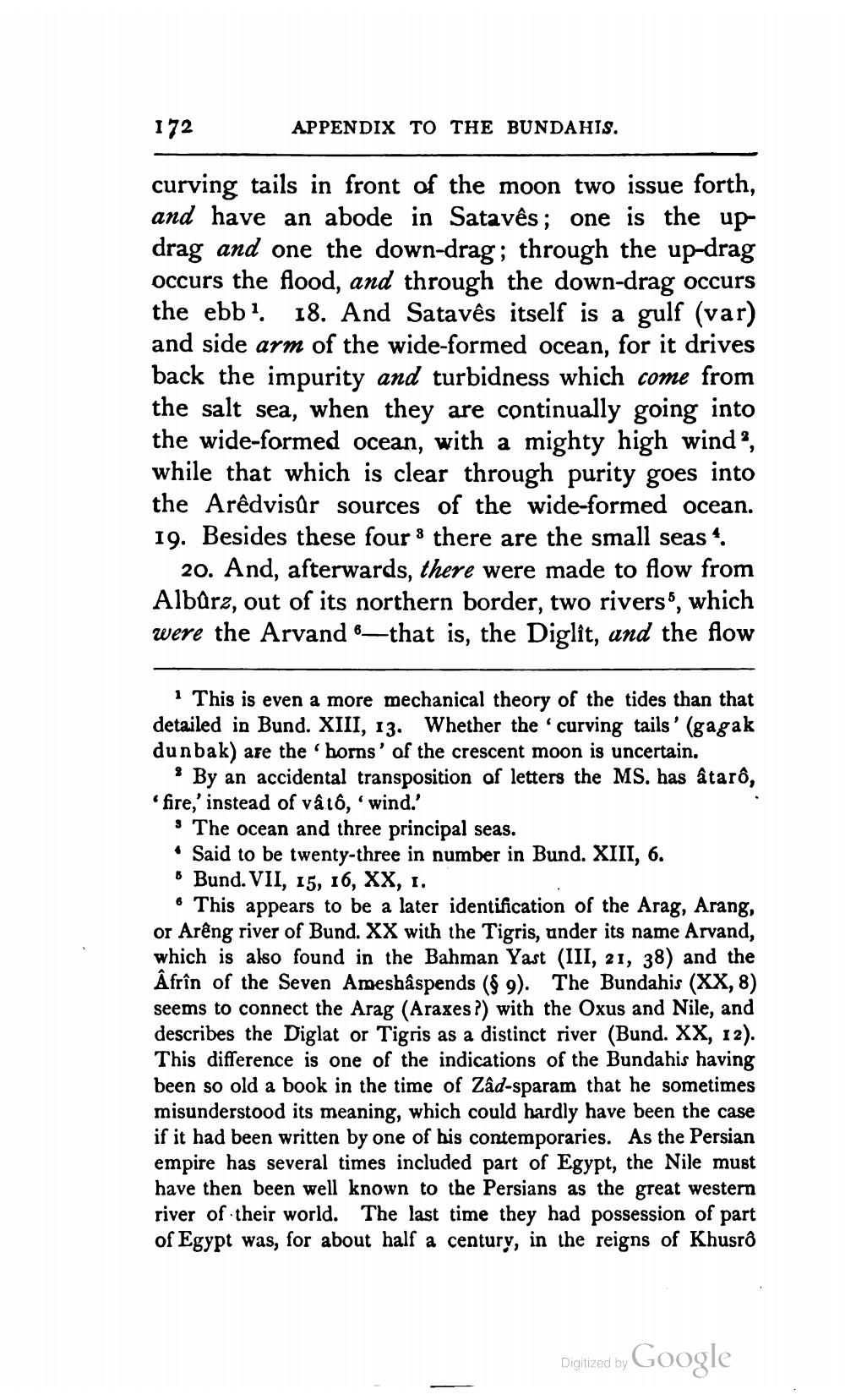________________
172
APPENDIX TO THE BUNDAHIS.
curving tails in front of the moon two issue forth, and have an abode in Satavês; one is the updrag and one the down-drag; through the up-drag occurs the flood, and through the down-drag occurs the ebbl. 18. And Satavês itself is a gulf (var) and side arm of the wide-formed ocean, for it drives back the impurity and turbidness which come from the salt sea, when they are continually going into the wide-formed ocean, with a mighty high wind, while that which is clear through purity goes into the Arêdvisûr sources of the wide-formed ocean. 19. Besides these four 8 there are the small seas“
20. And, afterwards, there were made to flow from Albârz, out of its northern border, two rivers, which were the Arvand 6—that is, the Diglît, and the flow
This is even a more mechanical theory of the tides than that detailed in Bund. XIII, 13. Whether the curving tails' (gagak dunbak) are the 'horns' of the crescent moon is uncertain.
By an accidental transposition of letters the MS. has âtarô, 'fire,' instead of vâtô, 'wind.'
• The ocean and three principal seas. • Said to be twenty-three in number in Bund. XIII, 6. 6 Bund. VII, 15, 16, XX, I.
* This appears to be a later identification of the Arag, Arang, or Arêng river of Bund. XX with the Tigris, under its name Arvand, which is also found in the Bahman Yast (III, 21, 38) and the Âfrîn of the Seven Ameshâspends ($ 9). The Bundahis (XX, 8) seems to connect the Arag (Araxes?) with the Oxus and Nile, and describes the Diglat or Tigris as a distinct river (Bund. XX, 12). This difference is one of the indications of the Bundahis having been so old a book in the time of Zâd-sparam that he sometimes misunderstood its meaning, which could hardly have been the case if it had been written by one of his contemporaries. As the Persian empire has several times included part of Egypt, the Nile must have then been well known to the Persians as the great western river of their world. The last time they had possession of part of Egypt was, for about half a century, in the reigns of Khusrð
Digitized by
Digitized by Google




